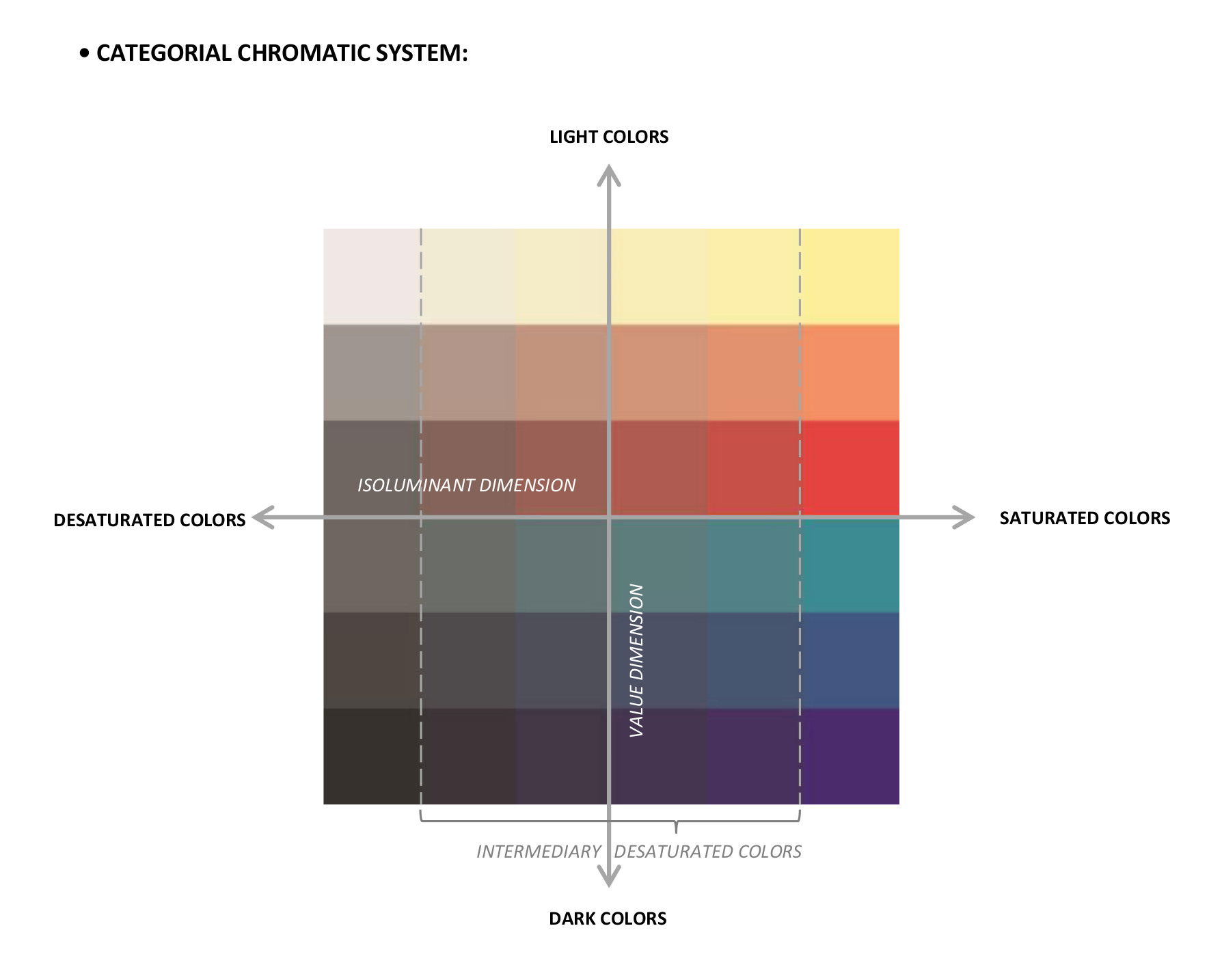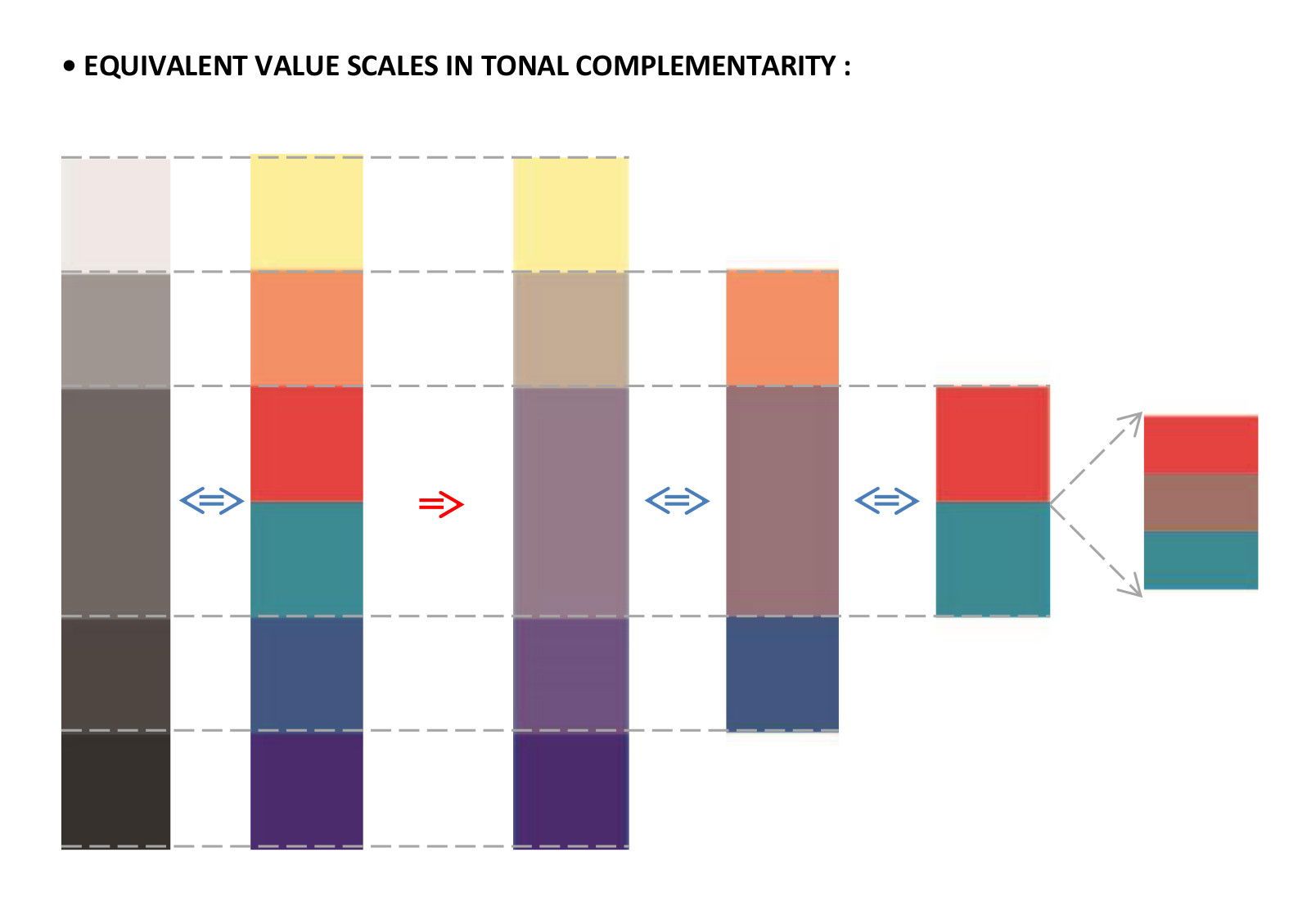NON-COLOR IS NOT COLOR?

To answer this question, beyond the study of historical and theoretical sources about the use of NON-COLOR notion, we must clarify the nature of COLOR in a neural and internalized way.
What is COLOR?
Is it just received visual information because of specific properties of light stimulus that excites the eyes?
Not only that.
THE COLOR is the sensorial-received information, synthesized at the PERCEPTUAL LEVEL and spatially and semantically contextualized at the COGNITIVE LEVEL because here we find the landmarks of spatial and verbal organization of THE CHROMATIC CATEGORIAL SYSTEM.
The integration of received chromatic information from the SENSORIAL LEVEL at the PERCEPTIVE LEVEL takes place more precisely in the LATERAL GENICULATE NUCLEI. Here the relations are established following the functions of the neural support of LATERAL GENICULATE NUCLEI. At this level, the received chromatic information integrates by criteria of MOTION perception of visual stimulus.
To achieve the concretization of the CHROMATIC CATEGORIAL SYSTEM by synthetic modeling of stabilized perceptive and cognitive relations, we must be aware of the need to solve the following DRAWBACKS of Bauhaus’s chromatic system:
1) The reception at the SENSORIAL LEVEL of physical visual stimuli doesn’t takes place by direct correspondence with their physical parameters but in a selective manner based on certain THRESHOLDS of sensorial assimilation calculated by the Weber-Fechner formula;
2) The reference to the EXTERNAL physical visual stimuli rules out the concern for color based on neural support of perceptive and cognitive INTERNALIZATION;
3) The TONES (HUES) are notions that originated from the need to VERBALIZE the chromatic categories at the COGNITIVE-semantic LEVEL, not a direct consequence of receiving the physical properties of visual stimulus at the SENSORIAL LEVEL;
4) The exclusion of the relation between VALUE and ISOLUMINANT DIMENTIONS of colors is due to the placement of all TONES (HUES) inside the model of COLOR SPHERE (see Runge's and Munzel's sphere) at the equatorial level - regardless of their value hierarchy – and the isolation of NEUTRAL GREY’s value hierarchy only on the sphere's vertical axle.

The neural support of LATERAL GENICULATE NUCLEI consists of three systems of neural tissue that integrate chromatic information based on the perceived MOTION of physical stimulus with three levels of motor intensity:
1) THE MAGNOCELLULAR SYSTEM integrates chromatic values information, relatively desaturated, and verbalized as light-dark or white-black, based on criteria of ALERT MOTION perception;
2) THE PARVOCELLULAR SYSTEM integrates isoluminant, or close values, chromatic information that corresponds with verbalized opposition between red and green, based on criteria of SLOW MOTION perception;
3) THE KONIOCELLULAR SYSTEM integrates mixed chromatic information of VALUE and ISOLUMINANCY that verbally corresponds to the opposition between blue and yellow, based on criteria of INTERMEDIARY MOTION, between ALERT and SLOW.

This way of neural organization results in a CHROMATIC CATEGORIAL SYSTEM where the cause of each category of color consists in the relation between the two fundamental properties in the opening of chromatic perception - VALUE and ISOLUMINANCY of colors– organized by:
1) The vertical coordinate of VALUE DIMENSION;
2) The horizontal coordinate of ISOLUMINANT DIMENSION.

The chromatic categories and their relations are displayed as follows:
1) LIGHT and DARK COLORS, placed at the extremes of THE VALUE DIMENSION and its parallels (value columns);
2) SATURATED and DESATURATED COLORS, in isoluminant relation and placed at the extremes of ISOLUMINANT DIMENSION axle and of his parallels (levels or value rows);
3) DESATURATED INTERMEDIARY COLORS placed between the extremes of isoluminant levels, relatively saturated or neutral according to their location related to the middle vertical median axle of VALUE DIMENSION;
4) TONAL COMPLEMENTARITY obtained by connecting the SATURATED COLORS equal disposed from the median horizontal axle, with median isoluminant tonal opposition (red-green);

5) CALORIC COMPLEMENTARITY obtained from the neutralization of saturated colors along their isoluminant level so that: a SATURATED COLOR perceived as relatively warm - by neutralization becomes colder; and a SATURATED COLOR perceived as relatively cold - by neutralization becomes warmer.
Compared with the Bauhaus’s chromatic systems, THE CHROMATIC CATEGORIAL SYSTEM has the following ADVANTAGES:
• It presents solid RELATIONAL CLARITY motivated from a scientific point of view;
• It doesn’t relate to EXTERNAL parameters fluctuations of physical visual stimuli but to the INTEGRATION at the PERCEPTIVE LEVEL of received information that is contextualized at the COGNITIVE LEVEL;
• The neural support is STABLE and doesn’t present uncertainty or functional variations due to neuro-anatomical differences between individual viewers at the level of photoreceptive retinal cells and of neural connections developed between them and the ganglion cells;
• The hierarchy of values also extends upon SATURATED COLORS and their DESATURATED INTERMEDIARY COLORS;
• The complementary SATURATED COLORS are CORRECTLY DISTANCED in their spectral and value order, with median isoluminant tonal opposition (red-green);
• The cause of caloric opposition is clarified by the function of the neural support of the KONIOCELLULAR SYSTEM that mediates between SATURATED and DESATURATED COLORS on the same values level;
• We can obtain the „CHROMATIC FINGERPRINT” of individual works of visual art by relational categorization of colors, not by the similarity of mixtures from which the colors of their surfaces result.
The organization of the CATEGORIAL CHROMATIC SYSTEM by ISOVALORIC LEVELS shows that even if we can’t tonally verbalize a DESATURATED COLOR, this never ceases to be a color, so it cannot be called a NON-COLOR or A-CHROMATIC COLOR. We can name NON-COLOR or A-CHROMATIC a RELATIONAL CONTEXT of DESATURATED COLORS, or even a mono-tonal context - as we will see in the stages of image research - but not an individual chromatic identity or index of color.
Also, the observations on the constitution of the CATEGORIAL CHROMATIC SYSTEM offer us the main features that must be fulfilled by a system of properties in the structural research of visual works of art:
1) It must be founded based on NEUROBIOLOGICAL SUPPORT, and the modeling has to mirror the neural processes or the attentive effects with a constant character of implied neural activity;
2) It has as final purpose the concretization of RELATIVE or COMPARATIVE CATEGORIES - not absolute identities, that are replicable and facilitate only the reproduction of images;
3) It applies in an OBSERVATIONAL and LUCRATIVE WAY to the image of individual works of visual art researched by the viewer or modeled by the author.